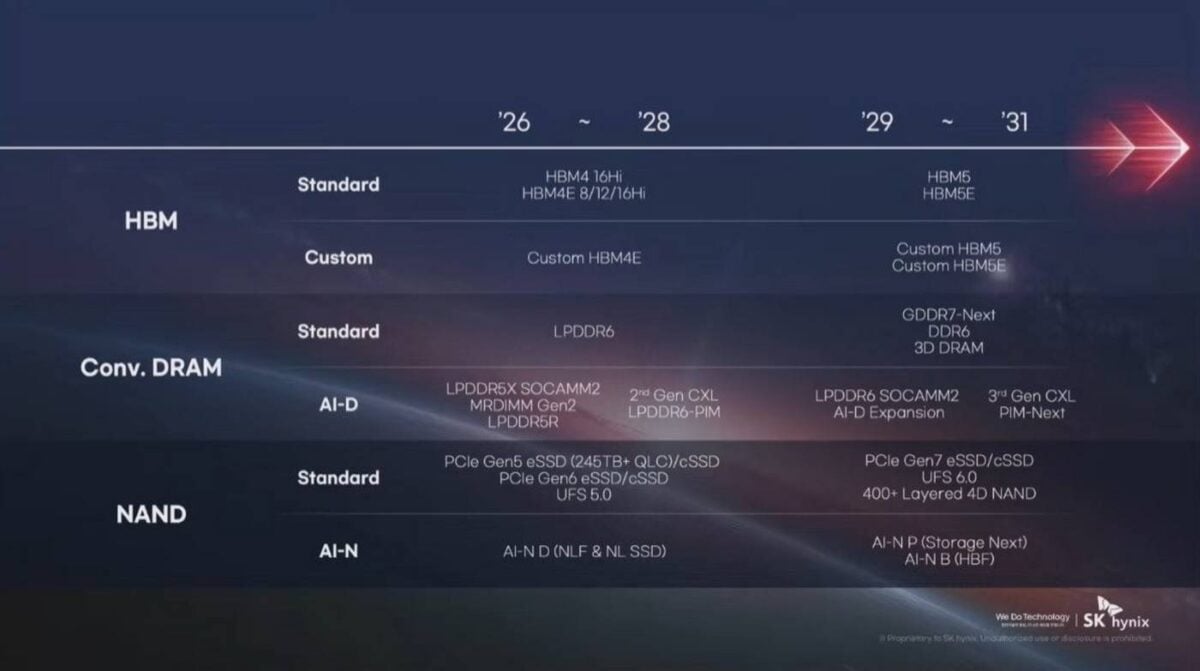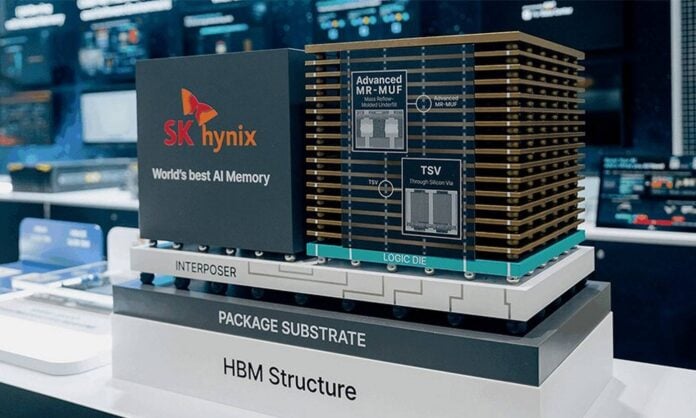Memory maker SK Hynix has just lifted the lid on its plans for the next few years, and they include loads of new tech, including PCIe Gen 7 SSDs, GDDR7-Next VRAM for graphics cards, and 3D DRAM. The company revealed its schedule for 2026 to 2031 at the SK AI Summit 2025, and there’s a lot to discuss, from HBM5 to new high-speed storage devices. The announcement comes at a time of ongoing RAM price inflation.
The roadmap is split into two timeframes. The first, going from 2026 to 2028, shows there are plans for PCIe Gen 6 SSDs coming not only for datacentres, but also for consumers. The roadmap also shows multiple variants of HBM4 and HBM4E memory for high bandwidth tasks like compute and AI.
Meanwhile, LPDDR6 memory is coming to low-power devices, and LPDDR5x SOCAMM2 RAM is on the way for compact laptops and other high-density devices. There are seriously high-capacity PCIe Gen 5 SSDs coming as well, with over 245TB of storage planned for QLC (quad-level cell) drives.
The second part of the roadmap goes through the products expected from 2029 to 2031, which includes the successor to the GDDR7 VRAM that currently powers Nvidia GeForce RTX 50 Series graphics cards. Simply referred to as GDDR7-Next, this upcoming memory generation should further boost bandwidth beyond the 48Gb/s per pin theoretical limit of GDDR7. While we are unlikely to see cards housing such memory before 2029, GDDR7 still has a lot of headroom, with current products only reaching 30 to 32Gb/s.

Out of this bunch, 3D DRAM is definitely worth noting. It stacks multiple layers of DRAM cells vertically, connected using TSVs (Through-Silicon Vias) and other advanced interconnects. Its goal is to increase density while reducing latency and power consumption, without needing smaller transistor manufacturing techniques. Having the source, gate, drain, and capacitor stacked in this fashion is said to reduce the die’s surface area by 30% compared to 6F2 DRAM.
Lastly, HBM is continuing its evolution across both timeframes alongside NVMe SSDs, ensuring a steady performance increase for flash technologies. The main beneficiary will be AI datacentres in the beginning, with consumers joining the fun a bit later, at least when it comes to Gen 6/7 storage. SK Hynix seems set for the next five years, though whether this roadmap will be respected remains to be seen.

